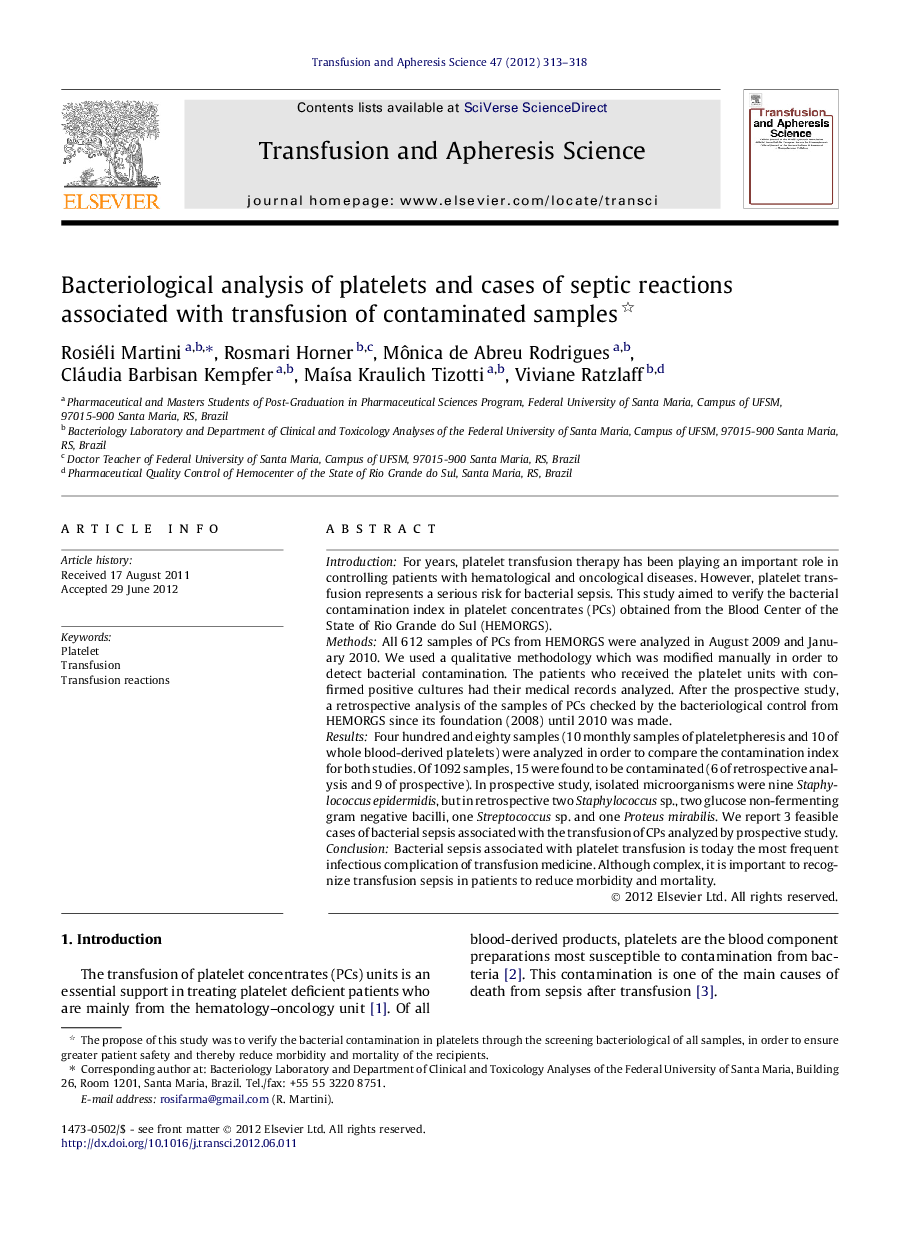| Article ID | Journal | Published Year | Pages | File Type |
|---|---|---|---|---|
| 3335390 | Transfusion and Apheresis Science | 2012 | 6 Pages |
IntroductionFor years, platelet transfusion therapy has been playing an important role in controlling patients with hematological and oncological diseases. However, platelet transfusion represents a serious risk for bacterial sepsis. This study aimed to verify the bacterial contamination index in platelet concentrates (PCs) obtained from the Blood Center of the State of Rio Grande do Sul (HEMORGS).MethodsAll 612 samples of PCs from HEMORGS were analyzed in August 2009 and January 2010. We used a qualitative methodology which was modified manually in order to detect bacterial contamination. The patients who received the platelet units with confirmed positive cultures had their medical records analyzed. After the prospective study, a retrospective analysis of the samples of PCs checked by the bacteriological control from HEMORGS since its foundation (2008) until 2010 was made.ResultsFour hundred and eighty samples (10 monthly samples of plateletpheresis and 10 of whole blood-derived platelets) were analyzed in order to compare the contamination index for both studies. Of 1092 samples, 15 were found to be contaminated (6 of retrospective analysis and 9 of prospective). In prospective study, isolated microorganisms were nine Staphylococcus epidermidis, but in retrospective two Staphylococcus sp., two glucose non-fermenting gram negative bacilli, one Streptococcus sp. and one Proteus mirabilis. We report 3 feasible cases of bacterial sepsis associated with the transfusion of CPs analyzed by prospective study.ConclusionBacterial sepsis associated with platelet transfusion is today the most frequent infectious complication of transfusion medicine. Although complex, it is important to recognize transfusion sepsis in patients to reduce morbidity and mortality.
